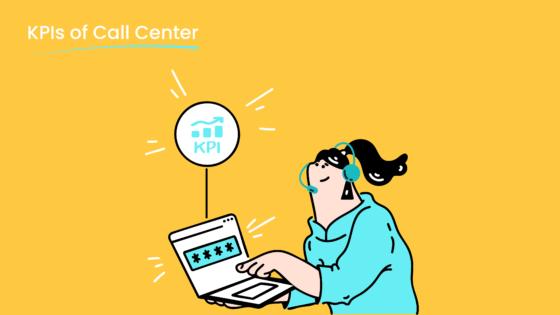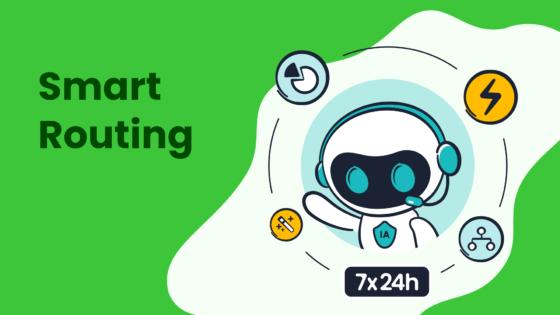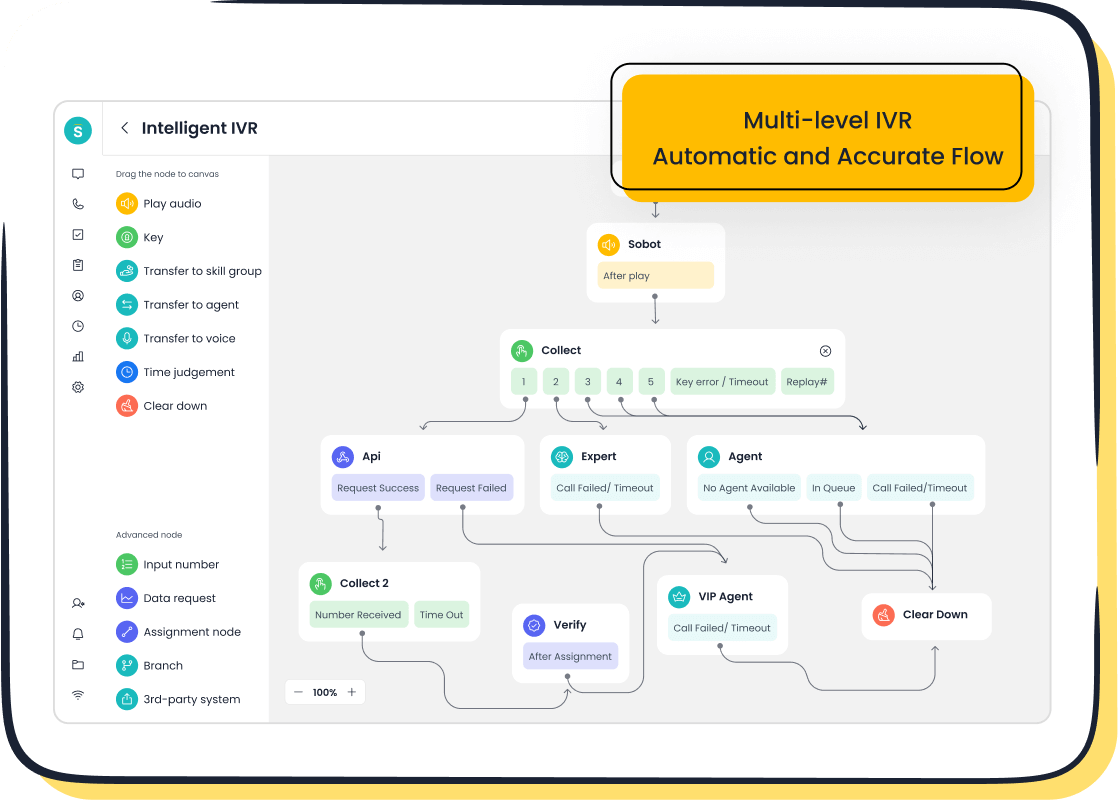Why Continuous Feedback Systems Matter in Organizations

In today’s fast-paced work environment, continuous feedback plays a vital role in shaping successful organizations. It fosters open communication, aligns individual efforts with company goals, and boosts employee engagement. Studies show that companies with effective feedback systems experience a 14.9% reduction in turnover rates and a 21% increase in profitability. Adobe’s shift to ongoing feedback led to a 30% rise in employee engagement, proving its transformative impact. Tools like Sobot’s Customer Feedback Collection (CFC) solutions make it easier to gather real-time insights. Can your organization thrive without embracing a feedback culture?
Understanding Continuous Feedback Systems
What Are Continuous Feedback Systems?
Definition and core principles of continuous feedback
A continuous feedback system is a structured approach to providing real-time, ongoing feedback to employees. Unlike traditional methods, it emphasizes frequent and actionable insights that help employees grow and align with organizational goals. Core principles include psychological safety, where employees feel secure sharing ideas, and feedback loops that ensure consistent improvement. Metrics like employee engagement scores and feedback frequency measure the system's success.
Key performance indicators (KPIs) such as productivity improvements and participation rates also play a vital role. For example, companies using structured feedback systems often see a 25% increase in productivity. This approach fosters a feedback culture, enabling employees to thrive in a supportive environment.
The role of ongoing feedback in employee development
Ongoing feedback is essential for employee development. It provides timely insights into performance, helping employees identify strengths and areas for improvement. This real-time interaction encourages accountability and ownership. Companies like Netflix and Adobe have demonstrated the effectiveness of continuous feedback systems, achieving a 14% increase in employee engagement and a 21% boost in productivity.
By integrating tools like Sobot’s customer feedback collection (CFC) solutions, organizations can streamline feedback processes. These tools enable managers to provide actionable insights, ensuring employees stay aligned with organizational objectives.
How Continuous Feedback Systems Differ from Traditional Models
Annual reviews vs. real-time feedback
Traditional annual reviews often fail to address immediate concerns, leaving employees without timely guidance. Continuous feedback systems, on the other hand, provide real-time insights that drive immediate action. For instance, organizations using continuous feedback report a 30% increase in employee engagement compared to those relying on annual reviews.
| Metric | Continuous Feedback | Traditional Annual Reviews |
|---|---|---|
| Employee Engagement Increase | 30% | N/A |
| Turnover Rate Reduction | 50% | N/A |
The shift toward agility and responsiveness
Modern workplaces demand agility. Continuous feedback systems enable organizations to adapt quickly to changing priorities. Real-time feedback fosters responsiveness, ensuring employees can adjust their efforts to meet evolving goals. This approach not only enhances productivity but also strengthens employee-manager relationships.
Key Components of a Continuous Feedback System
Technology and tools for customer feedback collection (cfc)
Technology plays a crucial role in continuous feedback systems. Tools like Sobot’s customer feedback collection (CFC) solutions simplify the process of gathering and analyzing feedback. Features such as intelligent IVR and call tracking provide actionable insights, helping organizations improve customer satisfaction and operational efficiency.
| Metric | Impact on Business |
|---|---|
| Net Promoter Score (NPS) | 5-10% improvement in customer retention |
| Customer Satisfaction Score (CSAT) | Increases customer engagement and satisfaction |
| Structured feedback channels | 25% increase in employee productivity |
The role of managers and peers in fostering a feedback culture
Managers and peers are pivotal in creating a feedback culture. Managers must lead by example, offering constructive feedback and encouraging open communication. Peer-to-peer feedback also builds trust and collaboration within teams. Together, these efforts create an environment where continuous feedback thrives, driving both individual and organizational success.
The Importance of Continuous Feedback Systems
Enhancing Communication and Collaboration
Breaking down silos with open feedback channels
Continuous feedback systems create open communication channels that break down organizational silos. When employees share ideas freely, collaboration improves, and teams work more cohesively. For example, a tech company implemented a feedback program and saw a 20% increase in employee engagement. This change strengthened team connections and aligned efforts with company goals.
Organizations using tools like Sobot’s Voice/Call Center can further enhance communication. Features such as intelligent IVR and call tracking provide real-time insights, ensuring feedback flows seamlessly across departments. This fosters a collaborative environment where everyone feels heard and valued.
Encouraging transparency and trust within teams
Transparency builds trust, and continuous feedback systems promote both. Regular feedback ensures employees understand their roles and contributions. A Gallup study revealed that organizations with frequent feedback experience 14.9% lower turnover rates and 21% greater profitability.
Managers who use continuous feedback create a culture of openness. Employees feel more confident sharing challenges and successes, leading to stronger team dynamics. Tools like Sobot’s unified workspace simplify this process by centralizing communication, making feedback accessible and actionable.
Driving Employee Engagement and Retention
Empowering employees with actionable insights
Continuous feedback empowers employees by providing actionable insights. Real-time feedback helps individuals identify strengths and areas for improvement. For instance, Microsoft’s “Growth Mindset” initiative showed a 30% productivity increase among employees receiving regular recognition.
Organizations adopting continuous feedback systems often see higher employee engagement. Metrics like a 24% increase in profit margins and a 15% rise in retention rates highlight the impact of these systems. Sobot’s solutions, such as AI-powered Voicebots, enable managers to deliver precise feedback, boosting employee confidence and performance.
Fostering a culture of recognition and growth
Recognition motivates employees and fosters growth. Continuous feedback systems ensure achievements are acknowledged promptly. Google’s “Check-in” program improved employee satisfaction by 20%, demonstrating the value of regular recognition.
By integrating feedback loops into performance management, you create an environment where employees feel valued. Tools like Sobot’s call tracking and analytics help managers identify and celebrate individual contributions, reinforcing a culture of growth and recognition.
Aligning Performance with Organizational Goals
Ensuring individual contributions align with broader objectives
Continuous feedback systems align individual efforts with organizational goals. Regular check-ins ensure employees understand how their work contributes to the company’s success. This alignment boosts productivity and engagement.

For example, companies using structured feedback systems report a 25% increase in productivity. Sobot’s intelligent IVR and smart call routing features help managers track performance metrics, ensuring employees stay focused on key objectives.
Adapting to changing priorities in real time
In dynamic environments, priorities shift frequently. Continuous feedback systems enable employees to adapt quickly. Real-time feedback ensures teams stay agile and responsive to changes.
Organizations leveraging tools like Sobot’s Voice/Call Center benefit from features like time zone support and AI-powered Voicebots. These tools provide instant insights, helping employees adjust their efforts to meet evolving goals. This adaptability strengthens organizational resilience and ensures long-term success.

The Impact of Continuous Feedback Systems on Organizations

Improved Employee Performance
Identifying strengths and areas for improvement
Continuous feedback systems help you identify employee strengths and areas needing improvement. Real-time insights allow employees to act on feedback immediately, enhancing their performance. For example, Microsoft reported a 20% productivity increase among teams engaged in regular feedback loops. Employees receiving ongoing feedback are also 3.6 times more likely to stay engaged in their roles. This approach ensures that every team member contributes effectively to organizational goals.
Encouraging accountability and ownership
When employees receive consistent feedback, they take greater ownership of their work. This accountability fosters a sense of responsibility and pride in their contributions. Adobe experienced a 30% rise in employee engagement after adopting continuous feedback practices. Tools like Sobot’s Voice/Call Center enable managers to track performance metrics and provide actionable feedback, ensuring employees remain aligned with organizational objectives.
Accelerated Skill Development
Providing targeted learning opportunities
Continuous feedback accelerates skill development by offering targeted learning opportunities. Immediate feedback highlights specific areas for improvement, enabling employees to address gaps quickly. This rapid learning cycle fosters growth and enhances overall performance. Research shows that organizations using feedback systems see up to a 25% improvement in performance metrics, as highlighted by McKinsey.
Supporting career growth and progression
Ongoing feedback supports career progression by aligning employee development with organizational needs. Regular check-ins help employees set clear goals and track their progress. A leading retail company saw a 50% increase in engagement scores after integrating weekly feedback sessions. Sobot’s AI-powered Voicebots can assist in delivering personalized feedback, empowering employees to achieve their career aspirations.
Enhanced Organizational Agility
Responding quickly to market changes
Real-time feedback systems improve your organization’s ability to adapt to market changes. Managers can swiftly identify and resolve issues, ensuring long-term service quality. Gallup’s research shows that teams using continuous feedback mechanisms experience a 14.9% productivity boost. Sobot’s intelligent IVR and call tracking features provide instant insights, helping you respond to evolving customer needs effectively.
Building a resilient and adaptable workforce
Continuous feedback fosters resilience by creating a culture of continuous improvement. Employees become more adaptable, ready to tackle new challenges. Training managers to deliver effective feedback has been shown to increase employee satisfaction by 10% and productivity by 30%. These improvements strengthen your workforce, ensuring long-term success in a competitive market.

The Role of Sobot’s Voice/Call Center in Feedback Systems
Leveraging intelligent IVR for real-time feedback

Intelligent IVR (Interactive Voice Response) systems transform how you collect real-time feedback. Sobot’s Voice/Call Center offers a customizable IVR that allows you to design menus and route calls efficiently. This feature ensures customers can share their experiences immediately after interactions. By automating feedback collection, you reduce the need for manual follow-ups, saving time and resources.
For example, Sobot’s intelligent IVR has helped businesses achieve a 20% reduction in inbound discussion volume. This improvement means your team can focus on resolving complex issues instead of handling repetitive queries. Additionally, the system ensures 80% accuracy in responses, enhancing the quality of feedback collected. These capabilities make it easier for you to identify trends and address customer concerns promptly.
Tip: Use Sobot’s drag-and-drop IVR interface to go live in real time and start collecting actionable insights effortlessly.
Using call tracking and analytics for performance insights
Call tracking and analytics provide valuable insights into your team’s performance. Sobot’s Voice/Call Center tracks every call, analyzing data to uncover patterns and opportunities for improvement. This feature helps you measure key metrics like customer satisfaction and problem resolution rates.
For instance, businesses using Sobot’s call tracking have reported a 97% customer satisfaction rate and an 85% problem resolution rate. These metrics highlight how effective feedback systems can improve service quality. The analytics dashboard also enables you to monitor trends, ensuring your team stays aligned with organizational goals.
| Metric | Value |
|---|---|
| Reduction in inbound discussion volume | 20% |
| Increase in positive feedback | 96% + |
| Correct answers from AI platform | 80% |
| Customer satisfaction rate (CSAT) | 97% |
| Problem resolution rate | 85% |
| Customer happiness rate | 99% |
| Increase in sign-off rate | 35% |
| Increase in COD collection rate | 40% |

By leveraging these tools, you can gain a deeper understanding of customer needs and employee performance. Sobot’s Voice/Call Center empowers you to make data-driven decisions, ensuring continuous improvement in your feedback systems.
Best Practices for Implementing Continuous Feedback Systems
Start with a Clear Strategy
Define goals and objectives for feedback systems
A clear strategy begins with defining the goals and objectives of your feedback system. Ask yourself what you aim to achieve—improved employee engagement, higher productivity, or better alignment with organizational goals. For example, organizations that implement regular feedback mechanisms often see a 14.9% increase in productivity. Setting measurable objectives ensures you can track progress and make necessary adjustments.
Involve stakeholders in the planning process
Involving stakeholders ensures the feedback system meets the needs of everyone in your organization. Managers, team leaders, and employees should contribute to the planning process. Their input helps create a system that fosters open communication and aligns with strategic goals. Adobe’s success with its “Check-In” program, which increased employee engagement by 30%, highlights the importance of collaboration in planning.
Leverage Technology for Seamless Integration
Use tools like Sobot’s Voice/Call Center for feedback collection

Technology simplifies feedback collection and analysis. Tools like Sobot’s Voice/Call Center streamline the process with features such as intelligent IVR and call tracking. These tools enable real-time feedback collection, helping managers identify trends and address issues promptly. Organizations that embrace technology for feedback report a 65% increase in employee satisfaction, showcasing the value of integrating advanced platforms into performance management systems.
| Statistic | Description |
|---|---|
| 58% | Leaders believe their organizations do not handle feedback well. |
| 65% | Technology-driven feedback systems improve employee satisfaction. |
Ensure accessibility and ease of use for all employees
Accessibility is crucial for successful feedback systems. Employees should find the tools easy to use, whether they work in-office or remotely. Platforms like Sobot’s Voice/Call Center offer user-friendly interfaces and global accessibility, ensuring seamless integration into daily workflows. This approach fosters a culture of continuous improvement and supports effective feedback sessions.
Foster a Feedback-Driven Culture
Train managers and employees on giving and receiving feedback
Training equips managers and employees with the skills needed for constructive feedback. Regular workshops and role-playing exercises can help teams practice effective communication. Google’s feedback discussions increased employee satisfaction scores by 10%, proving the value of training in fostering a feedback-driven culture. Well-trained teams contribute to better performance management and stronger collaboration.
Promote inclusivity and neutrality in feedback practices
Inclusivity ensures every employee feels valued, while neutrality prevents bias in feedback. Encourage managers to focus on specific behaviors and outcomes rather than personal traits. This approach builds trust and strengthens team dynamics. Continuous feedback fosters open communication, helping employees feel supported and reducing turnover rates by up to 34%.

Monitor and Refine the System
Collect data to measure effectiveness
To ensure your continuous feedback system delivers results, you need to collect data regularly. Metrics like employee engagement, productivity, and turnover rates provide valuable insights into its effectiveness. For example, companies with strong feedback cultures report a 14.9% increase in productivity and lower turnover rates. Adobe saw a 30% boost in employee engagement after adopting ongoing feedback practices.
You can use tools like Sobot’s Voice/Call Center to track performance metrics. Features such as call tracking and analytics help you gather real-time data. This data highlights trends and identifies areas for improvement. By monitoring these metrics, you can measure how well your feedback system aligns with organizational goals.
| Metric | Improvement Percentage | Source |
|---|---|---|
| Increase in productivity | 14.9% | Gallup |
| Increase in employee engagement | 30% | Adobe |
| Lower turnover rates | 14.9% | Gallup |
| Higher profit margins | 24% | Gallup |
| Performance improvements | Up to 25% | McKinsey |
Tip: Use Sobot’s analytics dashboard to visualize data and make informed decisions.
Make adjustments based on employee and customer feedback
Feedback systems thrive on adaptability. Regularly review the data you collect and listen to employee and customer feedback. This approach helps you identify gaps and refine your system. For instance, organizations that adjust their feedback mechanisms see up to a 25% improvement in performance metrics.
Sobot’s intelligent IVR and AI-powered Voicebots simplify this process. These tools allow you to gather feedback efficiently and implement changes quickly. For example, if employees highlight a need for more frequent check-ins, you can adjust your system to include weekly feedback sessions. Similarly, customer feedback can guide improvements in service quality.
By making these adjustments, you create a dynamic system that evolves with your organization’s needs. This ensures your feedback culture remains effective and continues to drive success.
Note: Continuous refinement not only improves performance but also strengthens trust and engagement within your team.
Real-World Examples of Continuous Feedback Systems

Adobe’s Check-In System
Transition from annual reviews to ongoing feedback
Adobe replaced traditional annual reviews with its innovative Check-In system. This approach emphasizes real-time, ongoing feedback rather than waiting for year-end evaluations. Managers now hold regular conversations with employees, focusing on performance, development, and goals. This shift has fostered open communication and created a culture of continuous improvement.
| Metric | Result |
|---|---|
| Reduction in voluntary turnover | 30% |
| Increase in employee engagement | 30% |
| Time saved in management hours | Over 80,000 hours |
The Check-In system has saved over 80,000 management hours previously spent on annual reviews. This time is now redirected toward strategic initiatives, enhancing overall productivity.
Results: Increased employee satisfaction and performance
Adobe’s Check-In model has significantly improved employee satisfaction and performance. Research shows a 30% increase in engagement and a 14.9% reduction in turnover rates. Employees feel more valued and supported, leading to higher motivation and better results. This system demonstrates how continuous feedback can transform workplace dynamics.
Netflix’s Culture of Feedback
Emphasis on candid, constructive conversations
Netflix has built a feedback culture centered on candid and constructive conversations. Employees are encouraged to share ideas openly, fostering creativity and innovation. The company uses a 360-degree review system, ensuring transparency and continuous improvement. This approach strengthens team synergy and enhances individual performance.
- Netflix’s feedback culture has led to a 75% increase in employee retention.
- Employees regularly share new ideas, driving innovation and growth.
- Constructive feedback helps identify areas for improvement, ensuring ongoing development.
Results: High-performing teams and innovation
Netflix’s emphasis on feedback has created high-performing teams. Employees collaborate effectively, driving innovation across the organization. A 2020 study revealed that companies using continuous feedback improve retention rates by up to 14%. Netflix’s success highlights the power of open communication in achieving organizational excellence.
Sobot’s Impact on Agilent’s Customer Service
Sixfold increase in customer service efficiency
Agilent, a leader in life sciences, partnered with Sobot to enhance its customer service operations. By integrating Sobot’s omnichannel workbench and AI-powered chatbot, Agilent achieved a sixfold increase in efficiency. The chatbot handled routine inquiries, allowing human agents to focus on complex issues. Intelligent routing ensured customers received targeted support.
| Metric | Value |
|---|---|
| Customer satisfaction rate | 95% |
| Reduction in inbound discussion volume | 20% |
| Problem resolution rate | 85% |
| Self-service question resolution | 22.2% |
Results: 25% cost reduction and 95% customer satisfaction
Sobot’s solutions helped Agilent reduce operational costs by 25% while achieving a 95% customer satisfaction rate. The AI-powered tools streamlined workflows, improved response times, and enhanced service quality. Agilent’s success demonstrates how Sobot’s technology can transform customer service efficiency.

Tip: Use Sobot’s Voice/Call Center to collect real-time feedback and improve customer satisfaction effortlessly.
Continuous feedback systems redefine how organizations communicate, develop skills, and align performance with goals. They create a culture where employees feel valued and motivated. For instance, 65% of employees report working harder when appreciated. A retail company saw a 50% rise in engagement scores after adopting weekly check-ins. Tools like Sobot’s Voice/Call Center simplify feedback collection, offering real-time insights that enhance operational efficiency. By embracing continuous feedback, you can foster growth, improve collaboration, and achieve long-term success.
Tip: Start small by integrating real-time feedback tools into your daily workflows.
FAQ
What are the key benefits of continuous feedback systems?
Continuous feedback systems improve communication, boost employee engagement, and align individual efforts with organizational goals. Companies using these systems report a 25% increase in productivity and a 14.9% reduction in turnover rates. Tools like Sobot’s Voice/Call Center simplify feedback collection, making it easier to achieve these benefits.
How does real-time feedback differ from traditional annual reviews?
Real-time feedback provides immediate insights, enabling employees to act quickly on suggestions. Traditional annual reviews often delay feedback, reducing its effectiveness. For example, organizations using real-time feedback systems, such as Sobot’s intelligent IVR, experience a 30% increase in employee engagement compared to those relying on annual reviews.
Can technology enhance feedback systems?
Yes, technology plays a crucial role in modern feedback systems. Platforms like Sobot’s Voice/Call Center offer features like call tracking and analytics, enabling real-time feedback collection. These tools improve customer satisfaction by 97% and help managers provide actionable insights, ensuring continuous improvement in employee and organizational performance.
How do continuous feedback systems impact employee retention?
Continuous feedback fosters a culture of recognition and growth, reducing turnover rates by up to 14.9%. Employees feel valued and supported when they receive regular feedback. For instance, Adobe’s Check-In system increased employee engagement by 30%, demonstrating the positive impact of ongoing feedback on retention.
Why should organizations adopt Sobot’s solutions for feedback systems?
Sobot’s Voice/Call Center offers advanced features like intelligent IVR, AI-powered Voicebots, and call analytics. These tools streamline feedback collection and improve operational efficiency. Businesses using Sobot report a 25% cost reduction and a 95% customer satisfaction rate, making it an ideal choice for enhancing feedback systems.
See Also
Comparative Analysis of Leading Customer Feedback Tools
Effective Strategies for Quality Management in Call Centers
Best Customer Feedback Software Options for 2024
Enhancing Call Center Efficiency Through Effective Monitoring
Essential Principles for Quality Management Systems in Call Centers
